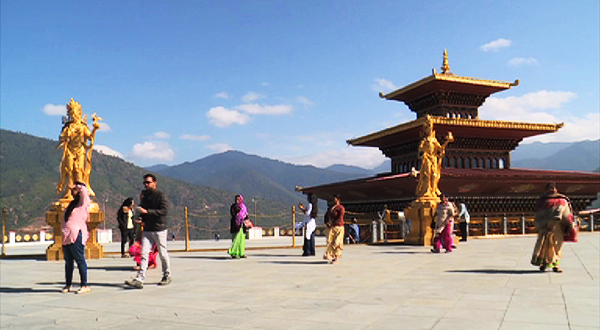 To ensure a sustainable tourism industry, the Tourism Council of Bhutan (TCB) is working on the first-ever comprehensive national tourism policy. Under the document, there will be guidelines on the management of regional tourists and introduction of sustainable development fee (SDF) for all tourists.
To ensure a sustainable tourism industry, the Tourism Council of Bhutan (TCB) is working on the first-ever comprehensive national tourism policy. Under the document, there will be guidelines on the management of regional tourists and introduction of sustainable development fee (SDF) for all tourists.
Bhutan has been receiving an increasing number of tourists every year. The increase in the number is more among the regional tourists. In 2018 alone, 202,290 regional tourists visited Bhutan.
Phuentshogling is one entry point for regional tourists. While some local residents are reaping the benefits, a few are concerned.
“After my college studies, I didn’t look for jobs. I directly entered the business of ferrying regional tourists. I bought a car on loan. The business is going fine. I am able to support my family and they are happy too. The only issue is the travel agents across the border are hampering our business because they lower the rate,” Vishwadeep Chhetri, a resident, said.
“The tourist vehicles travelling to Sikkim and Darjeeling don’t get to do site seeing. They have to park their vehicles at a designated parking lot. Similarly, if it could be replicated here, it will benefit us. We had asked previous governments on it. We hope the government would be working on such policies too,” Gyembo, another resident, said.
“If the government could either increase the fee for the Indian vehicles or make it compulsory to take a local guide with them. It will help ease the youth unemployment issue in the country,” Kuenga Namgay, also a resident said.
Another entry point is Paro, one of the most visited tourist destinations in the country. Owing to the increasing number of tourists, the number of hotels and handicraft businesses has increased drastically over the years. From just three handicraft shops in 2006, today there around 80 handicraft shops in the town. These businesses depend on tourists- both dollar paying and regional tourists.
“I have around 500 people coming to my shop and around 100 to 200 of them buy things. So for the shopkeepers in the town, regional tourists benefited especially during the lean season,” Dorji Penjor, the owner of MasterPiece Crafts, said.
“Regional Tourists has benefited hotels here a lot. Almost all the hotels in the town sustain through by regional tourists,” Changa Tshering, a hotelier, said.
In Thimphu, places such as the Buddha Point and Memorial Chorten can be seen flooded with regional tourists.
The Executive Director of Clean Bhutan, Nedup Tshering said infrastructure and carrying capacity is struggling to keep up with the ever-growing number of tourists.
“Last six years since the establishment of clean Bhutan, we did face a lot of problem with the regional tourists because they didn’t have a guided tour and they used to stop anywhere and they used to just litter everywhere. Today I think they are quite well aware. But I still think we need to do more,” Nedup Tshering, the Executive Director of Clean Bhutan, said.
The draft tourism policy which will come into effect towards the end of this year is expected to bring about an amicable solution to all these issues.
Foreign Minister Dr Tandi Dorji during the recent meet the press session said, “It is to align the policy as one tourism policy. There will be no distinction between the regional and international, tourists will be tourists. They will follow the same procedures. But on the details of SDF, how much is to be charged is still under discussion.”
The TCB said the upcoming tourism policy along with a guideline on regional tourists management will benefit both Bhutan and tourists.
“With this policy, those regional tourists will have to abide by the rules as they should route through our local tour operators and they should be processing their permits online and with this, they will be provided with a tour guide,” Thinley Gyeltshen, the Tourism Officer of TCB, said.
Sangay Chezom, Sonam Penjor & Samten Dolkar





